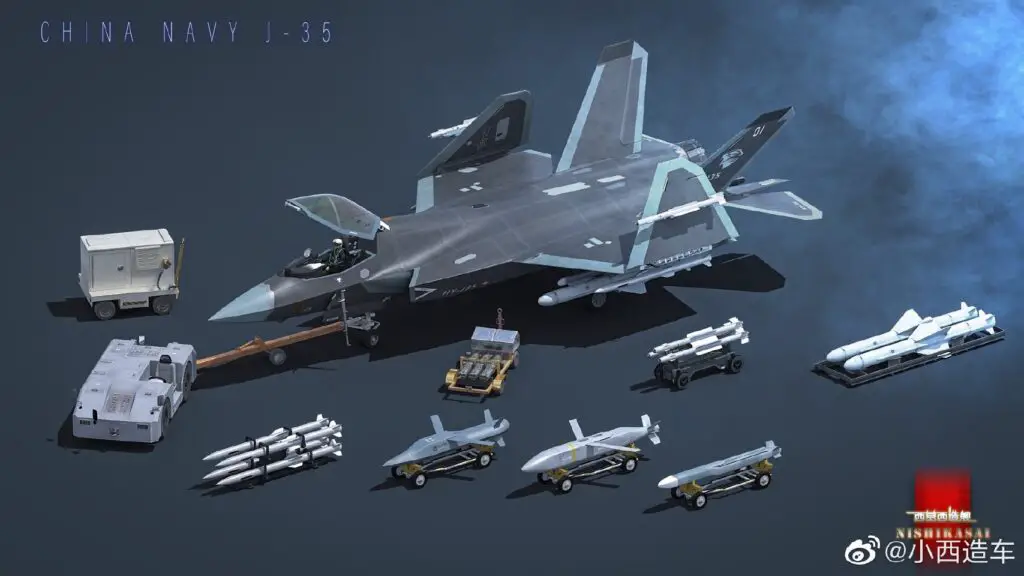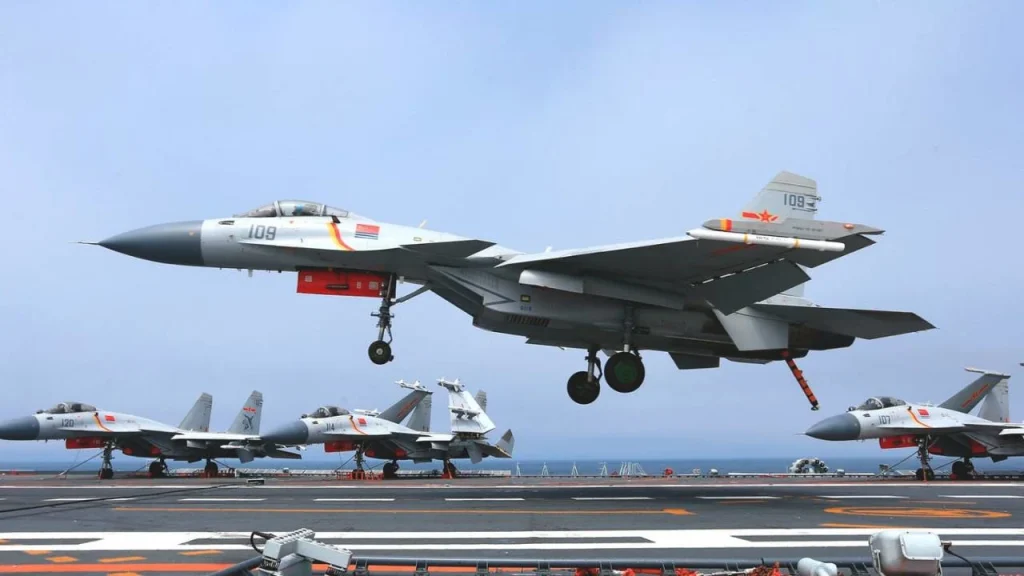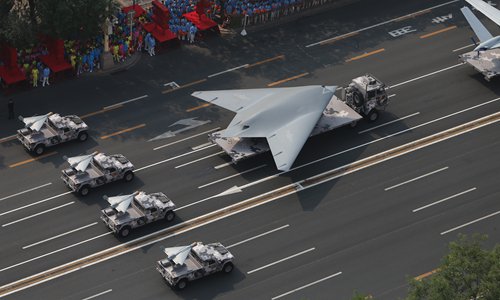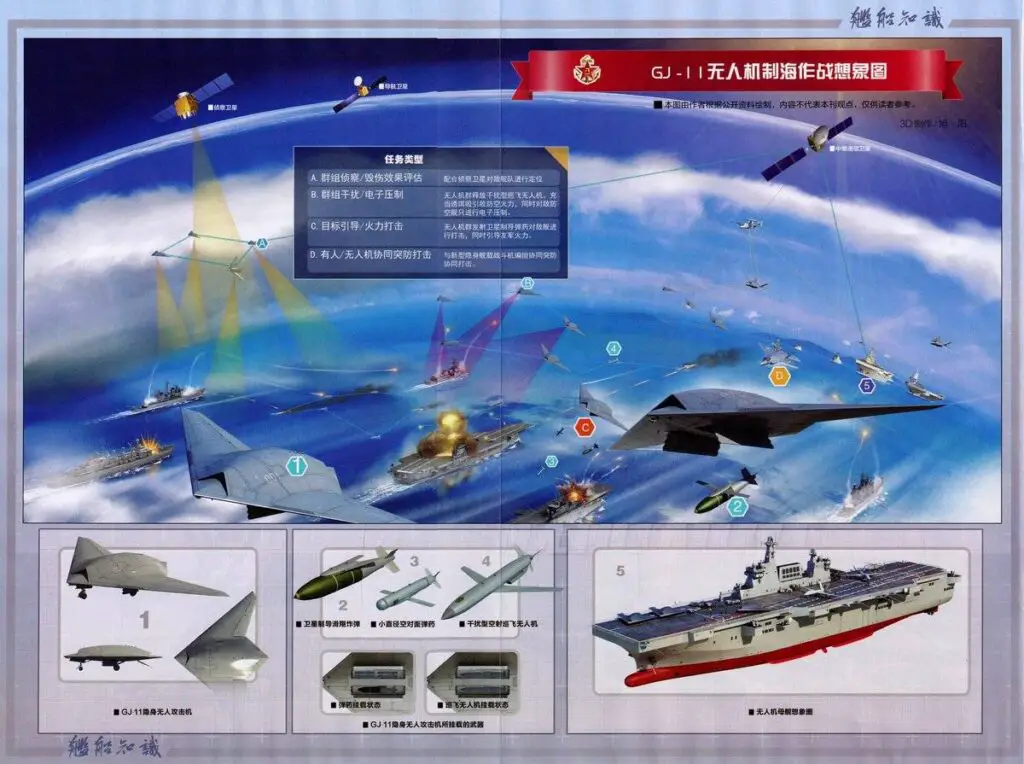The past few months have turned out to be more than fruitful for the aircraft industry of the PRC. The Celestial Empire has begun flight tests of the fifth-generation, first-ever two-seat fighter based on the J-20 stealth aircraft. This aircraft is increasingly seen as a platform for UAV control, which will be the responsibility of the weapons operator.
Even more interesting is another novelty – a carrier-based fighter, which also took to the skies for the first time not so long ago. The word “new”, as in the case of the J-20, can be applied conventionally. The vehicle, sometimes unofficially referred to as the J-35, is an evolution of the Shenyang FC-31, which first flew into the skies on October 31, 2012.
The FC-31 itself is a cross between the F-35 and the F-22 Raptor, but it is not a “copy” of either.

Like many stealth fighters, the aircraft has two engines, a V-tail and one pilot’s seat. The deck version inherited all this—however, there is a significant difference.
A domed Canopy
Before the appearance of the latest version, FC-31, the prototype and subsequent improved version had a “domed” canopy with a good view of the rear hemisphere. The new version features a completely redesigned canopy and cockpit layout. The pilot cannot visually see what is happening behind as the upper part of the fuselage “merges” with the rear part of the canopy.
Something similar can be seen on the F-35, but not on the most massive land-based version (A), not on the deck (C), but the F-35B short-takeoff and vertical landing aircraft designed for universal amphibious assault ships.
The American pilot is also largely “blind” when it comes to the view of the rear hemisphere. However, there is a nuance here. Firstly, in the case of the F-35B, it is dictated by the need to place a lifting fan behind the cockpit, without which the plane would not have been able to take off land vertically. In addition, the camera system should allow the F-35’s pilot to see “through” the aircraft, thanks to an innovative helmet-mounted display. How this was realised in practice is another question; now, we will not touch on it. It is known that the inability to look “over the shoulder” remains a serious problem for American pilots.

Does this mean China is developing a short takeoff and vertical landing aircraft? Such a fighter can be useful for light aircraft carriers or aircraft carriers that do not have launching catapults. These include, for example, the new British aircraft carrier “Queen Elizabeth”, for which, after abandoning the catapult, chose the F-35B instead of the proposed F-35C. The very need to develop the “B” -version was dictated by the presence of the universal amphibious ships in the U.S. Navy, for which this issue, due to the limited space on the deck, is even more acute.
The Chinese have already built several Type 075 universal amphibious assault ships (Yushen-class landing helicopter assault), which have become some of the largest warships in Chinese history. However, this is not an analogue of the U.S. ships on which the F-35 are deployed. The 75th is a “clean” helicopter carrier capable of carrying about 30 rotorcraft.
In addition, Beijing has two aircraft carriers – Shandong and Liaoning. They are devoid of launching catapults but have large jumps that allow launching the heavy J-15 – the Chinese version of the Su-33. The third aircraft carrier currently under construction will feature a catapult, and one can assume the subsequent ones will too. J-35 is being created for these carriers. Thus, China does not need a short takeoff and vertical landing aircraft. The reason for the “strange” appearance of the J-35 may lie elsewhere.

Perhaps the Chinese decided to make the most of the interior space so that the plane could carry as much fuel as possible. This is critical for two reasons. First, huge sea areas traditionally require a large combat radius. Second, if a fifth-generation fighter wants to remain “invisible,” it should not carry outboard fuel tanks.
Finally, the extremely large internal arms bays impose restrictions. Precisely for the reasons listed above, the American F-35 looks “bloated”, which is often reproached, calling it “a flying fuel tank” (And other, even less flattering nicknames).
It cannot be ruled out that the layout of the Chinese J-35 was dictated by aerodynamic requirements or by the need to place some kind of equipment behind the cockpit. However, all this could be done without resorting to such a sharp limitation of the pilot’s view.
The requirement for J-35

The flight and technical qualities, stealth indicators, avionics and weapons of the F-35C counterpart is still a mystery. But it will be a huge upgrader for the Chinese PLA Navy (PLAN) which operates Shenyang J-15. This fourth-generation fighter is often criticised for its high accident rate, general underdevelopment, and lack of stealth technology. The only real advantages of the J-15 over the old Su-33 is modern avionics and a much wider arsenal of aviation weapons. However, J-15 is not enough to effectively counter the American carrier-based F / A-18E / F Super Hornet, not to mention the fifth-generation F-35C fighter.
Thus, the Shandong and Liaoning with their J-15s cannot be viewed as effective measures against the U.S. Navy. De facto, the Chinese are now only at the beginning of the formation of a truly powerful aircraft carrier strike group. The Type 003 aircraft carrier may become a key part of the air wing of the future, but not the only potentially effective weapon against the U.S. Navy. Recently, the Chinese showed a slide showing a clash between the American and Chinese carrier strike groups. The emphasis was placed not on manned aircraft but on the use of Hongdu GJ-11 UAVs, which they want to launch from the Type 075 and upcoming Type 076 ships and which can carry large precision bombs and missiles. The fifth-generation carrier-based fighters are also present in the image, and they fly behind the UAV and provide cover.
